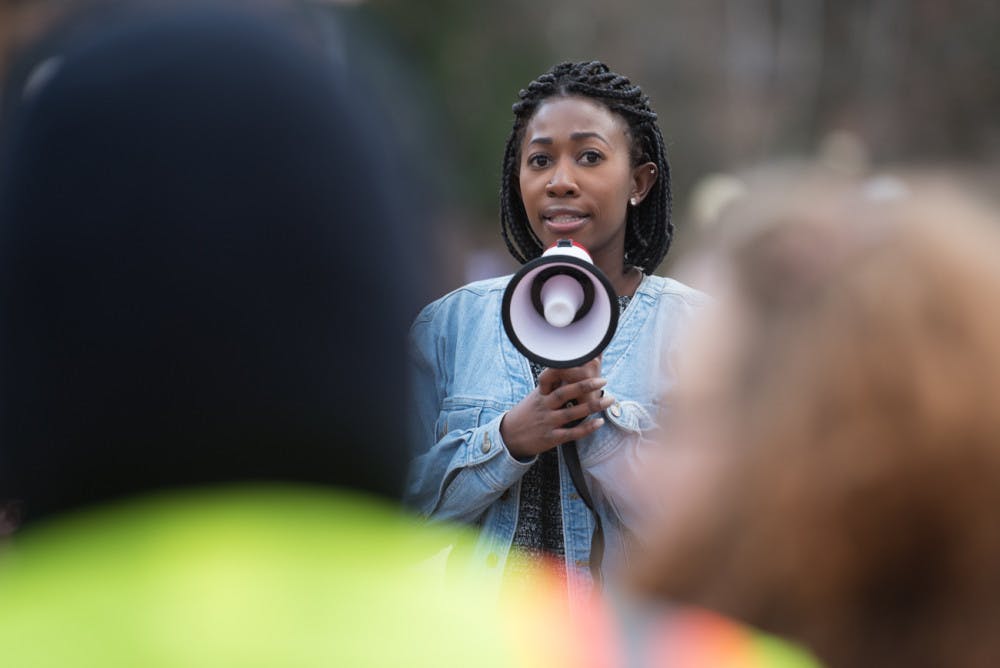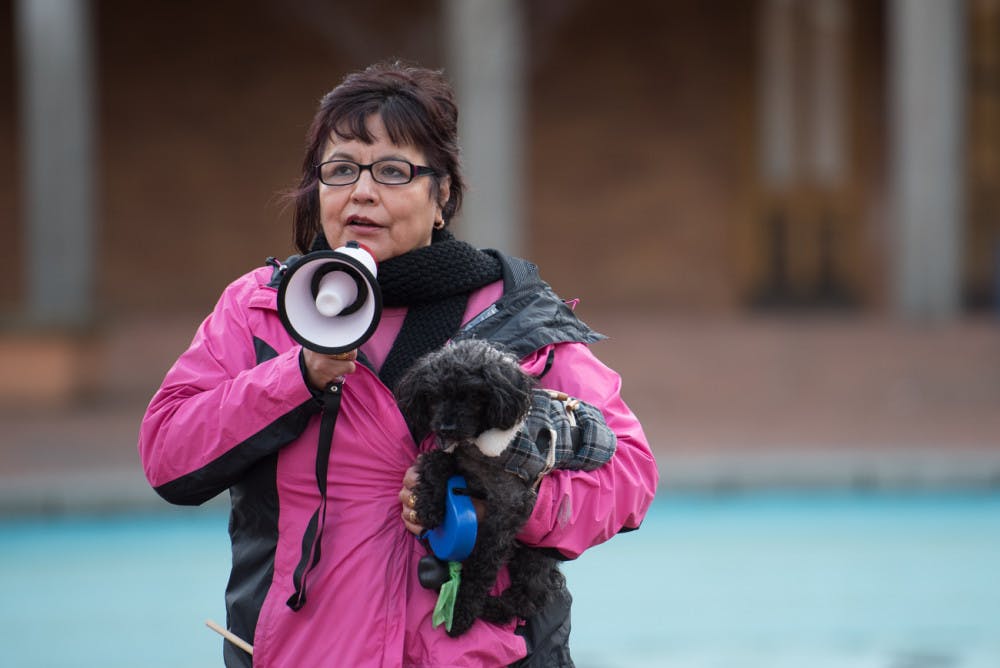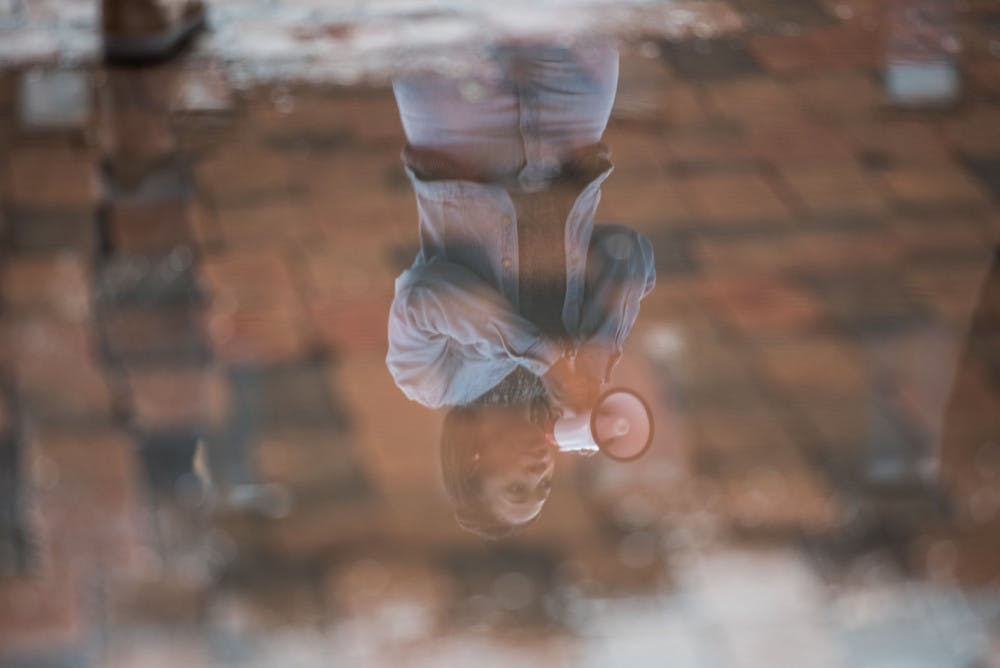Protesters hold a sign during a march from downtown Bellingham to the Western Washington University campus on Thursday, Jan. 17, in Red Square. // Photo by Oliver Hamlin
By Audra Anderson and Tris Anderson
Protesters carrying a cloth sign with the words “Stronger Together” assembled downtown on Thursday, Jan. 17 to march to Red Square as a sign of solidarity for marginalized groups on Western’s campus.
Students attending the protest spoke out on a range of topics including Western’s policies on sexual assault and harassment, hate crimes and oppression on campus.
Tyrus Reidt, an organizer of the march and a senior at Western, said one of the catalysts for the march was the university’s response to racist vandalism that occurred last November.
“It’s taken up until now for action to happen, and I think it’s the university’s job to use their money and their people to put forth those actions that are being asked,” Reidt said.
The student who allegedly committed the vandalism decided to leave Western on his own, according to a previous Western Front article. Following the completion of the university student conduct process, the student was expelled in December.
Protesters marched up the streets towards campus, chanting “the people united will never be divided.” A couple onlookers inquired about the cause, to which organizers responded it was a solidarity march.

At Red Square, fellow Western student and protest organizer Deborah Lawson, instructed the crowd to observe a moment of silence in solidarity with marginalized groups before sharing her own experiences with racism on campus. Lawson said she was instructed by a professor to find another classroom after expressing her anger at some students’ responses in class.
Lawson said another reason for the demonstration was the investigation into Western’s handling of sexual misconduct cases. Lawson mentioned Paul Stang, a professor of environmental studies, in the demonstration. Stangl sexually harassed two students on a field course, and is still teaching at Western, according to a previous Western Front article.
The U.S Department of Education’s Office of Civil Rights currently has two investigations opened since 2015 in regard to Western’s handling of sexual assault and harassment cases, according to their website.
Cynthia Taha, a member of the Wet’suwet’en Nation, spoke in Red Square about the discrimination experienced by indigenous peoples in the U.S. and Canada. Taha mentioned the environmental destruction of her people’s land via the pipelines in Canada.

“In order to act globally, we need to act locally,” Taha said to the crowd.
Jesse Worland, a member of the Socialist Alternative group, announced a meeting that will be held Jan. 28 surrounding socialist feminism, while Reidt passed around a volunteer sign-up sheet for future events.
The protest initially had 20 attendees, with more people joining as speakers presented at Red Square.
“It was sparse,” Jaimie Waltz, a protester, said. “I think it definitely needed more media attention.”
Waltz said the lack of involvement could be due to the homogenous population of Western, and that the majority of students may not personally experience the things the demonstration covered.
Another student, Sonora Weaver, attributed the smaller crowd to the uninvolved attitudes of students on campus.
“In general, the student body is pretty apathetic,” Weaver said. “They like to think they are more woke than they really are. They’re all talk, they don’t do anything.”
Lawson, however, said she was satisfied with the protest.
“People showed up, people were listening, and hopefully it will sprout,” Lawson said.

Director of University Communications and Marketing Paul Cocke said in an email he could not provide an informed response to the protest since he did not know the specific details.
“The University is committed to academic freedom, freedom of speech, petition and assembly,” Cocke said. “These are fundamental to the democratic process. They are also fundamental to the academic process.”
Lawson intends to maintain a broad scope for future protests to address all forms of oppression on campus. Lawson said the goal of the protest is not just to create a safer environment for current students, but future generations of students as well.
“[The protest] is just to bring everyone together and [promote] a sense of healing,” Lawson said.





